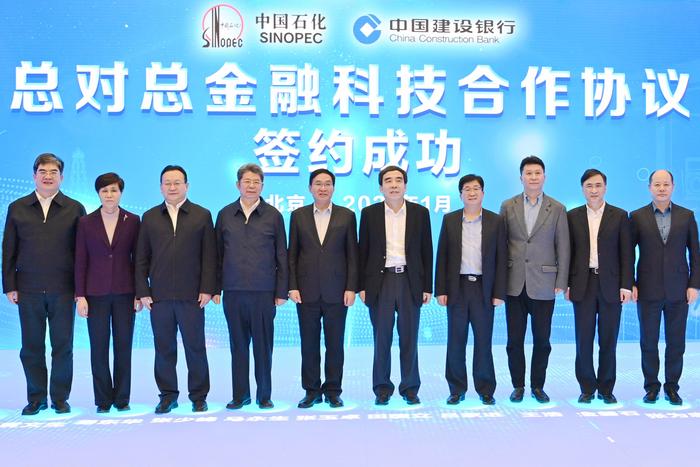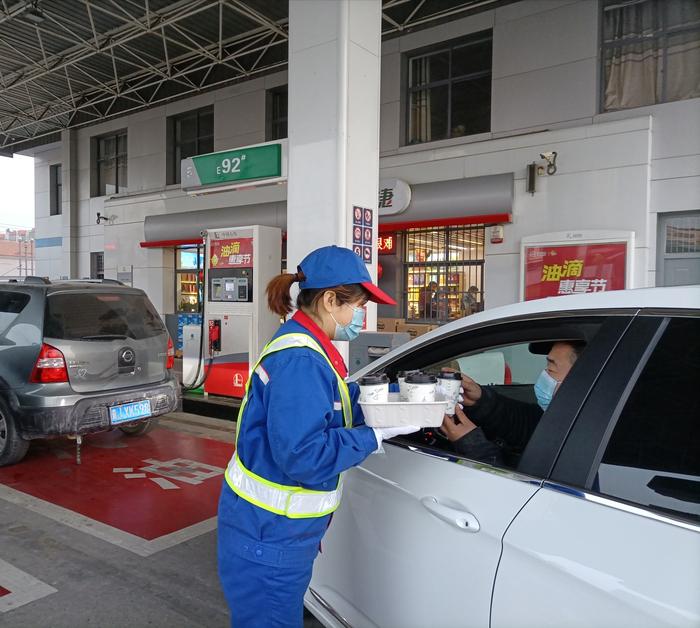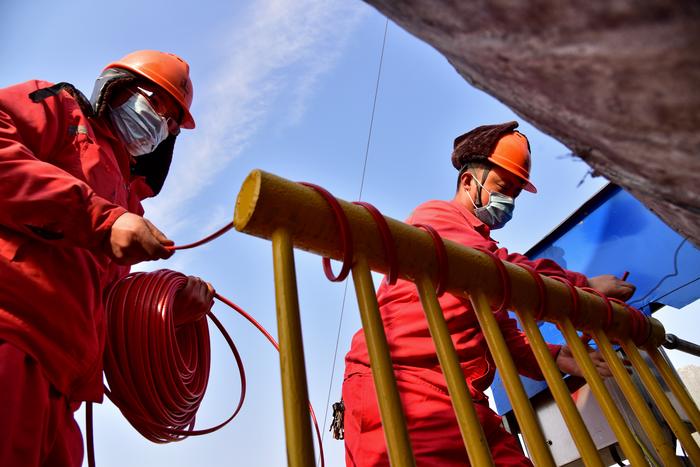|
| 2021-01-22 来源: 中国石化新闻网 |
| 石化新闻 |
中国石化新闻网讯 据路透社1月19日报道,预计包括荷兰皇家壳牌(Royal Dutch Shell)和道达尔(Total)在内的全球能源巨头将在1月份天然气价格飙升中收获非常大的利益,因为这些石油巨头能够获得多样化的燃料来源,将击败与之竞争的贸易公司和非一体化生产商。 由于受到库存少、冬季寒冷、全球生产中断和运输延误等因素影响,亚洲液化天然气(LNG)价格在1月份飙升至历史新高,价格已经超过了天然气储量丰富的欧洲和美国大部分地区,这为卖家创造了套利机会。 好几家公司和贸易商都在争相满足亚洲的需求,却难以快速提高交货数量。不过,像壳牌和道达尔这样拥有多种天然气来源的石油巨头,能够将原本运往欧洲的美国、尼日利亚和卡塔尔的天然气油轮改道运往亚洲市场。 一位不愿透露姓名的大企业高管表示:“我们正在对订单货物进行灵活的调整,以便将它们运往更高价的市场。在欧洲市场,我们仍然可以购买管道天然气,因此可以用它来代替供应液化天然气的承诺。一旦你在欧洲的交货量可以由管道天然气补足,那么计划运往这个地区的货物就可以重新安置到其他有需求的地方。” 目前,不包括运输和其他成本,价格在不同地区存在巨大差异。Henry Hub基准的美国2月份天然气期货价格目前约为2.6美元/百万英热。在欧洲,荷兰TTF中心的价格约为10美元/百万英热,而在亚洲,价格略低于30美元/百万英热。 一位熟悉卡塔尔国有企业QP的消息人士表示:“一般的天然气交易商没有这样的灵活性,但石油巨头有,尤其是那些能获得卡塔尔天然气的公司。” 要知道,卡塔尔、澳大利亚、俄罗斯和美国是最大的液化天然气生产国,占全球产能的70%。 加拿大皇家银行资本市场(RBC Capital Markets)表示,在石油巨头中,挪威国家石油公司(Equinor)、壳牌和道达尔对天然气价格的敞口最大。巴克莱(Barclays)在一份报告中表示:“我们认为,壳牌受益于LNG价格的上涨,不过道达尔也应该会获益。” 数据情报公司Kpler的船舶跟踪数据显示,壳牌和道达尔将尼日利亚和美国液化天然气的货物转运至亚洲,其他几批货物也将目的地转向了亚洲。咨询公司Third Bridge的Peter McNally表示,美国公司Cheniere和Freeport也将受益,因为它们在亚洲有大量业务。 值得一提的是,在过去的几十年里,液化天然气是一种销售灵活且价格更便宜的管道天然气替代品,但仍然只占全球天然气交易总量的10%左右。绝大部分液化天然气的销售是基于与石油价格挂钩的长期交易,但约有十分之一的市场是价格灵活的现货。 当前价格上涨主要影响的是现货液化天然气,而长期交易价格目前约为布伦特原油价格的11-13%,或约6- 7美元/百万英热。 另一位高管表示:“如今,亚洲的现货液化天然气炙手可热,任何抢购价格都可能出现。” 飙升的液化天然气价格激励卡塔尔迅速扩大其项目,并将使美国许多陷入困境的液化天然气工厂获得复苏机会。 但油价飙升也可能破坏一个灵活的现货液化天然气市场的形成,因为许多买家可能更愿意坚持与石油价格挂钩的长期交易。到目前为止,今年冬天的液化天然气价格存在着严重误判的可能。而在未来几周和几个月里,长期合同价格有望重新浮出水面。 王佳晶 摘译自 路透社 原文如下: Analysis: Oil majors beat traders, gas rivals to cash in on LNG price spike Global energy majors including Royal Dutch Shell and Total are expected to benefit most from January’s gas price spike, beating rival trading houses and non-integrated producers thanks to their access to multiple sources of the fuel. Asian liquefied natural gas (LNG) prices have rocketed to record highs in January due to low stocks, a cold winter, global production outages and shipping delays. They have outpaced prices in much of Europe and the United States, where gas is abundant, creating an arbitrage opportunity for sellers. Several companies and traders have rushed to meet the Asian demand, but have struggled to find volumes for quick delivery. However, majors such as Shell and Total, with access to multiple sources of gas, have been able to re-route U.S., Nigerian and Qatari gas tankers previously destined for Europe to Asian markets. “Some of our long-term contracts include possibilities for diversions. We are ‘reshuffling’ cargoes that are flexible to direct them to premium markets,” said an executive with one major, speaking on condition of anonymity. “On the European market, we can still buy pipe gas and therefore substitute it for a commitment to supply LNG. Once your delivery commitments in Europe are covered in pipe gas, the cargoes that were planned for this area can be repositioned where there is demand,” he said. Shell declined to comment. Total had no immediate comment. The regional difference in price, excluding shipping and other costs, is currently huge. U.S. gas futures for February at the Henry Hub benchmark currently trade at around $2.60 per million British thermal units (mmBtu). In Europe, prices at the Dutch TTF hub are around $10 per mmBtu, while in Asia they are just under $30. “Traders don’t have such flexibility but majors do, especially those with access to Qatari gas,” said a source familiar with Qatar’s state firm QP. Qatar, Australia, Russia and the United States are the biggest producers of LNG, accounting for 70% globally. RBC Capital Markets says Equinor, Shell and Total have the biggest exposure among majors to gas prices. “We see Shell as advantaged by its exposure to the strength of LNG prices, although Total should also be a beneficiary,” Barclays said in a note. Data intelligence firm Kpler’s shiptracking data showed Shell and Total diverting cargoes with Nigerian and U.S. LNG to Asia, with several other cargoes also changing destination towards Asia, though charterers were not clear. Peter McNally from consultants Third Bridge said U.S. firms Cheniere and Freeport should also benefit as they had volumes available for Asia. PANIC BUYING LNG has emerged as a flexible and often cheaper alternative to pipeline gas over the past decades, but it still represents only about 10% of the total natural gas traded globally. The lion’s share of LNG is sold based on long-term oil-indexed deals, but around a tenth of the market is spot, with flexible prices. The current price spike affects mostly spot LNG, while long-term deals are currently being priced at around 11-13% of the Brent crude price, or around $6-$7 per mmBtu. “Spot LNG in Asia is now like toilet paper rolls during the pandemic - you look at the empty shelves and you grab the last one at any price,” said a second executive with another major trading desk. Surging LNG prices are giving Qatar an incentive to quickly expand its projects and will support many struggling LNG plants in the United States. But the spike could also undermine the formation of a flexible spot LNG market as many buyers may prefer to stick to long-term oil-indexed deals. “Exposing more to the spot this winter has been a terrible miscalculation so far. In the coming weeks and months, it will bring the value of long-term contracts back to light,” said the first executive. |








